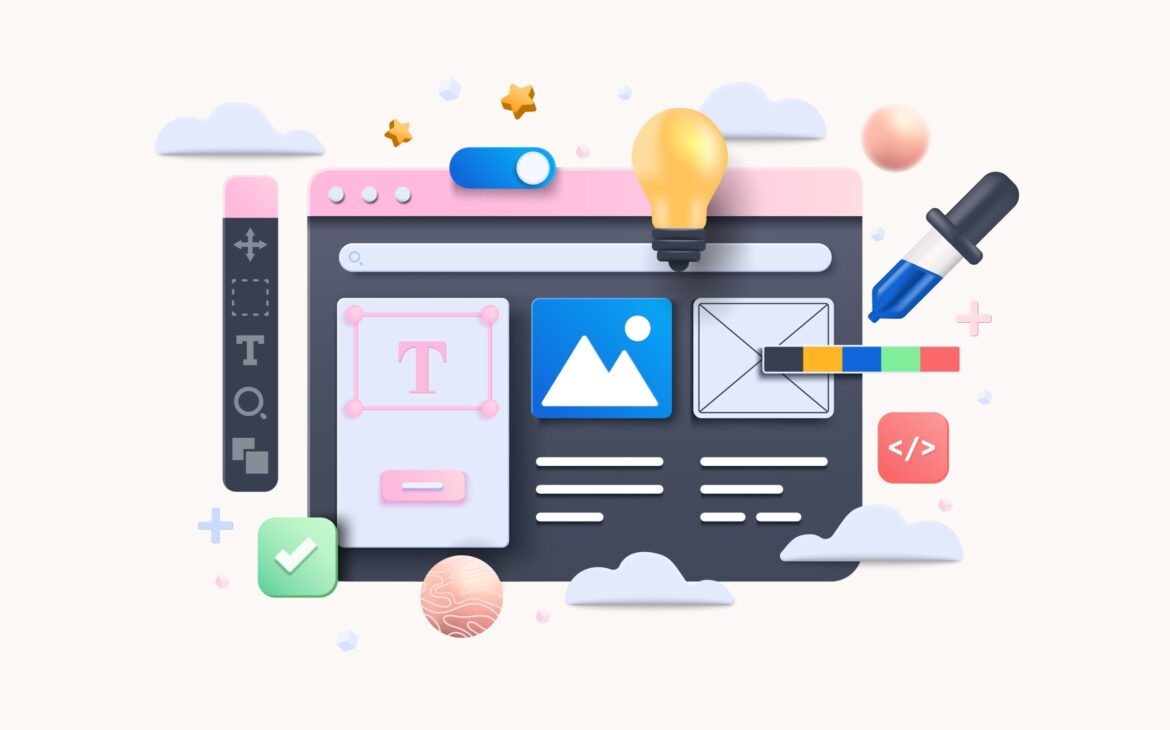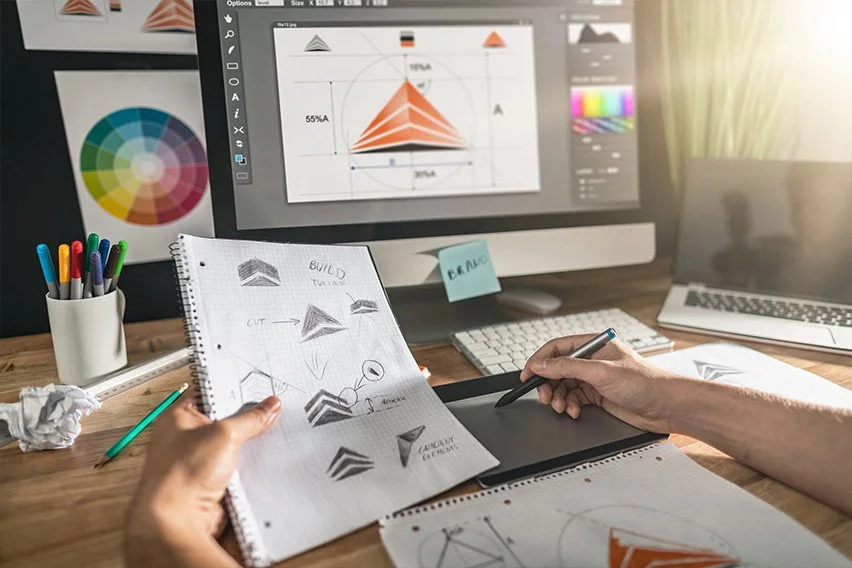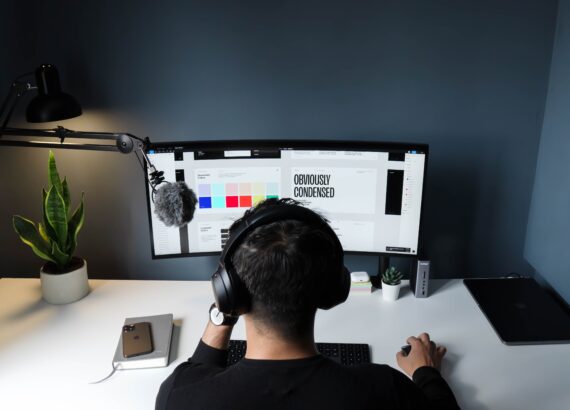5 Tips for Creating a Standout Portfolio in Graphic Design
Creating a standout portfolio is essential for graphic designers looking to make a lasting impression and secure exciting opportunities in the industry. Your Graphic Design portfolio serves as a visual representation of your skills, creativity, and unique design style, making it a powerful tool for showcasing your talent to potential clients or employers. However, crafting a compelling portfolio requires careful planning and strategic decisions.
In this article, we will explore five key tips to help you create a standout Graphic Design portfolio in graphic design. From selecting and showcasing your best work to incorporating a strong personal brand and leveraging online platforms, these tips will guide you in presenting your talent and expertise in the most effective way possible.
Let’s dive in and elevate your graphic design portfolio to new heights! This article provides valuable insights to help you make a lasting impression in the competitive world of graphic design.
1. Understanding the Purpose of a Graphic Design Portfolio
The role of a graphic design portfolio in career advancement
A graphic design portfolio serves as a visual representation of your skills, creativity, and style. It showcases your best work and demonstrates your ability to create compelling designs. Think of it as your creative resume that can open doors to new opportunities and career advancement.

Identifying your target audience and their expectations
When creating a portfolio, it’s crucial to consider who your target audience is.
Are you looking to impress potential clients, employers, or both? Understanding their expectations will help you tailor your portfolio to meet their specific needs and preferences.
Defining the goals and objectives of your portfolio
Before diving into creating your portfolio, clearly define what you want to achieve with it. Do you want to demonstrate expertise in a particular niche? Showcase your versatility.
Attract more freelance clients? Defining your goals will give your portfolio a sense of direction and purpose.
Get up to 70% Discount on Amazon Electronic Products
2. Selecting and Showcasing Your Best Work
Evaluating the quality and relevance of your projects
Choose projects that best represent your skills and reflect the type of work you want to be doing. Remember, relevance is key, so prioritize projects that align with your target audience’s needs and interests.
Choosing a diverse range of projects to showcase your skills
While it’s important to showcase your expertise, don’t limit yourself to just one style or type of project. Including a diverse range of work will demonstrate your versatility and ability to adapt to different design challenges. Aim for a well-rounded portfolio that showcases your range of skills.
Curating a cohesive and visually appealing collection of work
Your portfolio should tell a story and flow seamlessly from one project to another. Think of it as a curated exhibit, where each piece complements the next. Consider factors such as colour schemes, typography, and layout to create a visually appealing and cohesive collection of work.

3. Crafting an Eye-Catching Portfolio Layout
Choosing a suitable format for your portfolio (digital, physical, or both)
Decide whether you want to create a digital portfolio, a physical one, or a combination of both. Digital portfolios are easily shareable and allow for interactive elements, while physical portfolios can make a lasting impression in interviews. Consider your target audience and pick the format that best suits your goals.
Designing a visually engaging cover page
First impressions matter, so put extra effort into designing a captivating cover page for your portfolio. It should reflect your style and create intrigue, making the viewer eager to explore further.
Use compelling visuals, and typography, and consider incorporating your logo or branding elements.
When organizing your portfolio, think about how someone would navigate through it. Arrange your projects in a logical order, such as by project type, chronology, or relevance. Use clear labels or categories to guide the viewer, ensuring they can easily find what they’re looking for.
4. Highlighting Your Design Process and Problem-Solving Abilities
Providing insights into your creative thinking and problem-solving approach
Don’t just showcase the final designs; give your audience a glimpse into your design process. Explain your creative thinking, the concepts behind your work, and the problem-solving strategies you employed.
This will demonstrate your ability to think critically and strategically, setting you apart from other designers.
Showcasing the different stages of your design process (sketches, drafts, revisions)
Including sketches, drafts, and revisions in your portfolio adds depth and authenticity to your work. It shows the progression from the initial concept to the final polished design. By sharing these stages, you’re giving the viewer a behind-the-scenes look into your creative journey.
Use your portfolio as an opportunity to highlight how you tackled these challenges and the innovative solutions you came up with. This not only demonstrates your adaptability but also showcases your problem-solving abilities, making you a valuable asset to potential clients or employers.
Get up to 70% Discount on Amazon Electronic Products
5 Tips for Creating a Standout Portfolio in Graphic Design
Incorporating a Strong Personal Brand in Your Portfolio
When it comes to standing out in the sea of graphic designers, having a strong personal brand can make all the difference. Defining your unique style and design aesthetic is essential in showcasing your individuality. Are you more minimalistic or playful?
Whatever your preferences may be, make sure they shine through in your portfolio.
Creating a consistent visual identity is another crucial aspect of building a strong personal brand. Pay attention to typography, colour, and imagery choices to establish a cohesive and visually appealing portfolio.
Consistency is vital, as it helps potential clients or employers understand your design style better.
Lastly, don’t forget to infuse your values and personality into your portfolio. Whether it’s through your choice of projects, your bio, or your design approach, find ways to communicate who you are as a designer. Let your portfolio be a reflection of your passions and interests, and let your personality shine through.
6. Presenting Your Portfolio in Various Formats: Digital and Print
In today’s digital age, it’s essential to optimize your portfolio for online viewing. Ensure that your digital portfolio is easy to navigate, visually appealing, and showcases your work effectively.
Consider organizing your projects into categories or using a clean and intuitive layout. Make sure your portfolio is responsive and looks great on different devices.
However, don’t overlook the power of a printed portfolio for in-person presentations. Designing a physical version of your portfolio can add a tactile element that digital portfolios lack.
Play around with different paper textures, binding techniques, and layouts to create a memorable printed portfolio.
If you’re feeling adventurous, why not explore alternative formats like video or interactive presentations? These formats can breathe new life into your portfolio and uniquely captivate viewers. Just make sure they align with your brand and the purpose of your portfolio.

7. Leveraging Online Platforms and Social Media to Showcase Your Work
To truly make your portfolio stand out, you need to go beyond a personal website. Identify the online platforms that are most suitable for showcasing your work. Whether it’s Behance, Dribble, or Instagram, choose platforms that align with your target audience and the design community you want to be a part of.
When optimizing your portfolio for search engines, think about the keywords potential clients or employers might use to find designers like you. Incorporate these keywords into your portfolio descriptions, titles, and tags to enhance discoverability.
Social media is also a powerful tool for sharing and promoting your work. Utilize platforms like Instagram, Twitter, or LinkedIn to showcase your projects, engage with the design community, and connect with potential clients or employers. Remember to maintain a consistent visual identity across your social media profiles to reinforce your brand.
8. Continuously Updating and Improving Your Portfolio
A standout portfolio is a dynamic portfolio. Regularly update your portfolio by adding new projects and removing outdated work. This not only keeps your portfolio fresh but also showcases your growth and versatility as a designer.
Seeking feedback and constructive criticism is essential for continuous improvement. Please share your portfolio with peers, mentors, or fellow designers and ask for their honest opinions. Don’t be afraid to make revisions or change directions based on the feedback you receive.
Finally, stay abreast of industry trends and incorporate them into your portfolio when appropriate. Showcasing your ability to adapt and stay current demonstrates your dedication to the field and your willingness to embrace new design techniques.
By incorporating a strong personal brand, presenting your portfolio in various formats, leveraging online platforms and social media, and continuously updating and improving your portfolio, you’ll be well on your way to creating a standout portfolio in the competitive world of graphic design. Now, go forth and wow the world with your exceptional design skills!
Conclusion
By implementing these five essential tips, you can create a standout portfolio that not only impresses but also effectively communicates your skills and design prowess. Remember to continuously update and refine your portfolio to stay current and relevant in an ever-evolving industry. With a well-crafted portfolio that reflects your unique style, showcases your best work, and highlights your problem-solving abilities, you will be well-positioned to attract the attention of clients, employers, and opportunities that can take your graphic design career to new heights. Good luck in creating your standout portfolio!
FAQ
1. How many projects should be in my portfolio?
There is no specific number of projects that you must include in your portfolio. Quality matters more than quantity. It is better to showcase a smaller number of your best and most relevant projects rather than overwhelming viewers with too many mediocre ones. Aim for a diverse range of projects that demonstrate your skills and expertise across various design styles and mediums.
2. Should I include personal projects in my portfolio?
Yes, including personal projects in your portfolio can be a great way to showcase your creativity, passion, and ability to work independently. Personal projects allow you to explore different design concepts and experiment with new techniques, demonstrating your versatility and innovation to potential clients or employers.
3. Should I create both a digital and a physical version of my portfolio?
Creating both a digital and a physical version of your portfolio can be advantageous. A digital portfolio allows for easy sharing and accessibility, especially when applying for remote positions or online opportunities. However, having a physical portfolio can make a strong impression during in-person presentations or interviews, providing a tactile and immersive experience for viewers. Consider your target audience and the nature of the opportunities you are pursuing to determine which format is most suitable or create a hybrid portfolio that combines the best of both worlds.
Thank you for reading 🙂


















